How to Use Shopping Bots (7 Awesome Examples)
Learn how to use Shopping Bots, written by Harvie Singh, an Ecommerce Specialist at The Ecom Academy
Wouldn’t it be great if robots could do parts of your job while you take home an even bigger salary?
Well, if you’re in the ecommerce business I’m here to make your dream a reality by telling you how to use shopping bots.
In this article I’ll provide you with the nuts and bolts required to run profitable shopping bots at various stages of your funnel backed by real-life examples.
What is a shopping bot and why should you use them?
In its simplest form, a shopping bot is a simple form of artificial intelligence (AI) which simulates a conversion with a person over the Internet, but in action they are like your best customer service employee on an infinite supply of caffeine.
They don’t need lunch breaks or vacation time to take their mini-bots to Spain or a company parking space.
Once you get under the hood of a shopping bot, they do more than just reply with pre-set answers; they are able to provide prospects with the information they need to turn them from consideration to purchase.
If you’re spending tens of thousands of dollars per month to drive paid traffic to your ecommerce store, each visitor will have different questions that need answering, so having a real-life human isn’t scalable and it’s an expensive option compared to shopping bots.
A Hubspot study found that 82% of consumers want an immediate response when they have a marketing or sales question, and 90% said they want an immediate response to a customer service-related query:
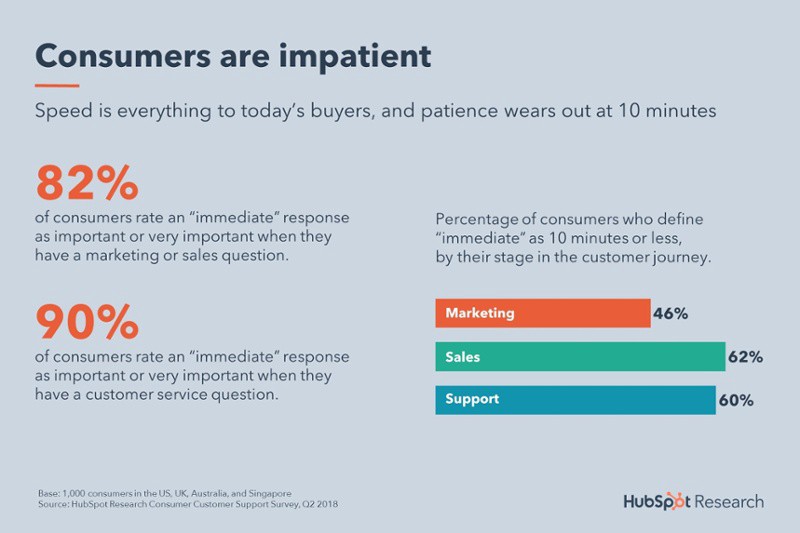
Ten years ago, businesses held the power. They had a 5-7-day delivery window, and “We’ll get back to you within 48 hours” was the standard.
Today power has shifted toward the consumers and they are relentless with their demands.
If you don’t offer next day delivery, they will buy the product elsewhere.
If it takes you 24 hours to reply to an email query, they will buy the product elsewhere.
If you don’t accept PayPal as a payment option, they will buy the product elsewhere.
The response rate figures above are insane and near impossible to achieve without hiring full-time staff who work around the clock, 24/7.
Robots will work for minimal amounts of electricity.
If both options are free, consumers prefer to use a messaging tool over a phone call to have their questions answered:
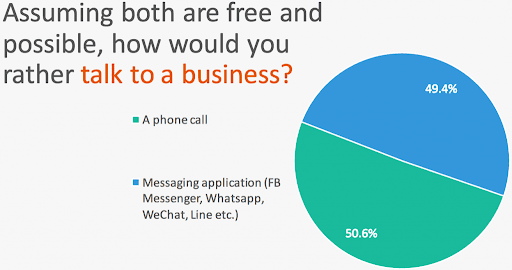
Thanks to messaging apps, humans are becoming used to text chat as their main form of communication. This trend is likely to carry on as teens turn into adults who favor apps like Messenger and WhatsApp over traditional forms of communication like phone calls (yes, I just called telephone a traditional medium).
Shopping bots have also been shown to increase online buying frequency. A study carried out by eMarketer found that shoppers who engage with bots buy more frequently than shoppers who don’t:
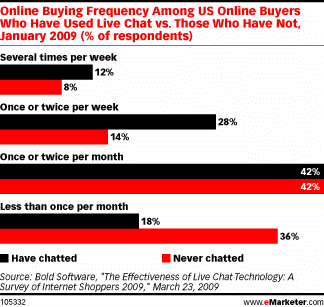
This is because they are getting their questions answered right away instead of going back to Google and potentially ending up on a competitor site like Amazon or eBay.
With AI shopping bots on the rise, how can you strategically use them within ecommerce to drive sales?
Here are six real-life examples of shopping bots being used at various stages of the customer journey.
Whole Foods Market shopping bots
Whole Foods Market uses shopping bots at the start of the customer journey and provides customers with four potential paths to take:

I am presented with the options of (1) searching for recipes, (2) browsing their list of recipes, (3) finding a store, or (4) contacting them directly.
No two customers are the same, and Whole Foods have presented four options that they feel best meet everyone’s needs.
This was a Messenger bot shown on their Facebook page. Shoppers who visit their Facebook page are typically at the start of the customer journey; they have found a page through a post or ad, or have visited the website and either have a question they would like to ask or want to learn more about the business.
Seattle Ballooning
Seattle Ballooning is – yes, you guessed it – a business that offers hot air balloon rides for special events in Seattle.
They too use a shopping bot on their website that takes the user through every step of the customer journey.
They start by asking why I want to hire a balloon:
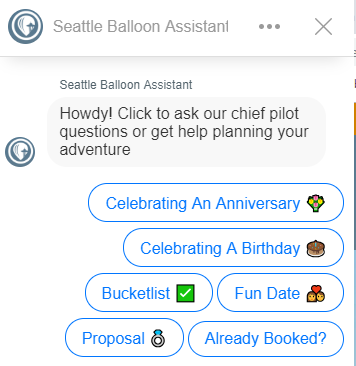
Unfortunately they didn’t have the option, “I’m writing a blog post about shopping bots,” so I went with ‘Bucketlist’:
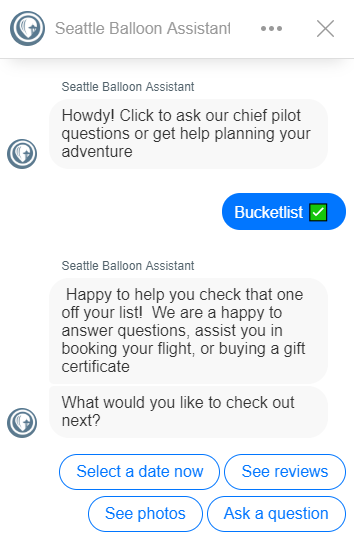
The next message was the consideration part of the customer journey. This is where shoppers will typically ask questions, read online reviews, view what the experience will look like, and ask further questions.
They cover reviews, photos, all other questions, and give prospects the chance to see which dates are free.
I chose to read their reviews and they provided direct links to their YELP, Google review, Facebook, and TripAdvisor pages, with two further options of asking more questions or booking:
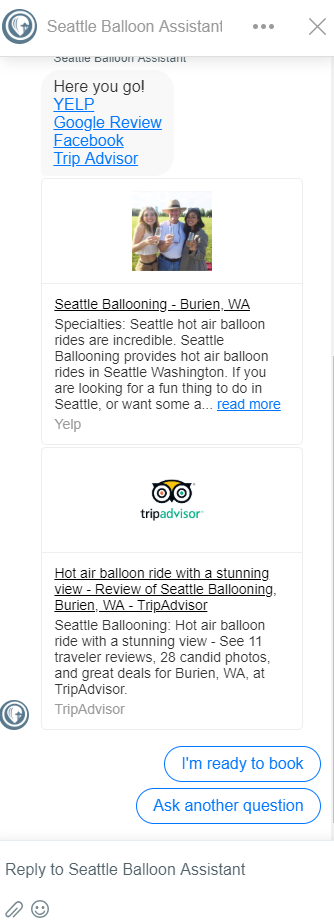
The perfect questions and answers.
Within a minute, their shopping bot helped me decide why I wanted to use their services and saw what others have been saying, and they they asked me to make a booking or ask another question. If I had another question that wasn’t regarding their preset options, they asked me to write it down and provide my email for a reply. If I wanted to book, I could do so directly on their site.
This is a well thought-out shopping bot from a business that clearly understands their customer journey.
Pura Vida Bracelets
I love and hate my next example of shopping bots from Pura Vida Bracelets.
I visited their website and added a few items to my cart but didn’t complete the checkout because I remembered that I don’t have a girlfriend to give a bracelet too 🙁
Later the same day I got an alert on Facebook Messenger. Was it the girl who I met at the party last night asking me if I got home safely?
Nope 🙁 It was Pura Vida Bracelets showing me an offer for the bracelets I viewed earlier.
Less than a day from visiting their website, this lands in my inbox:
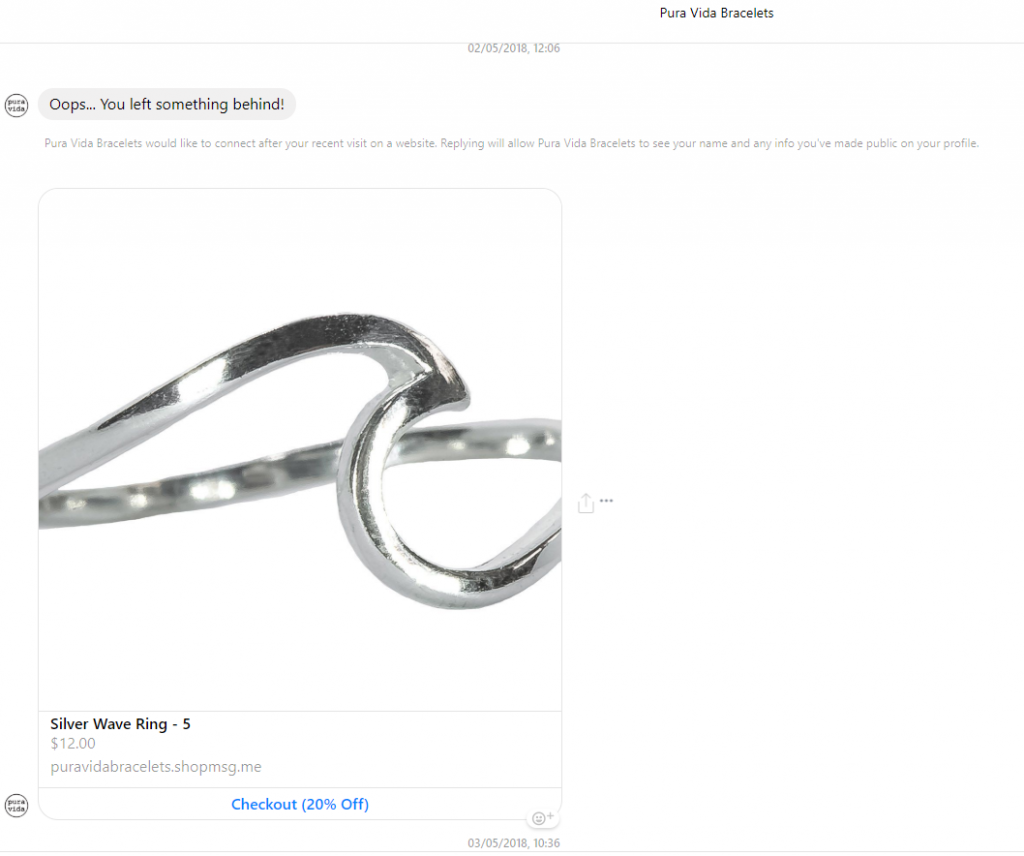
What I like – I love the fact that they are retargeting me in Messenger with items I’ve added to my cart but didn’t buy.
As I added items to my cart, I was near the end of my customer journey, so this is the reason why they added 20% off to my order to help me get across the line.
They then sent a second and third message both 24 hours apart telling me that the offer was about to expire:

It’s the first time I’ve seen a business retarget me on Messenger and I was pretty impressed with how they did it, showing me the exact item I added to my cart with a discount voucher of 20%.
What I didn’t like – They reached out to me in Messenger without my consent. Their shopping bot must have nerves of steel to do that.
At no point on their site did I ask them to send me a message, nor did I contact them first.
I felt this was a slight invasion of privacy. As I associate Messenger with friends and family, I don’t expect businesses to contact me without me having messaged them first.
I feel they aren’t looking at the bigger picture and are more focused on the first sale (acquisition of new customers) rather than building relationships with customers in the long term.
Their shopping bot has put me off using the business, and others will feel the same.
Shopping bots have many positive aspects, but they can also be a nuisance if used in the wrong way.
I’m sure that this type of shopping bot drives Pura Vida Bracelets sales, but I’m also sure they are losing potential customers by irritating them.
Always put the shopper first when creating shopping bots. Provide them with the right information at the right time without being too aggressive.
If you liked this example and want to use it on your own ecommerce store, apps like Amico connect Shopify with Messenger to alert users who added items to their cart and are also logged in on Facebook.
Paleo Robbie
Online food service Paleo Robbie has a simple Messenger bot that lets customers receive one alert per week each time they run a promotion.

After clicking the ‘Sign Up’ button I’m asked if I would like to receive promotions for their Meal Plan, Grocery, or both. I chose the Grocery option because I like to pretend I’m Gordon Ramsay in the kitchen.
They let me know what to expect, provided a small voucher with a call to action to visit their site, and explained how I could unsubscribe.
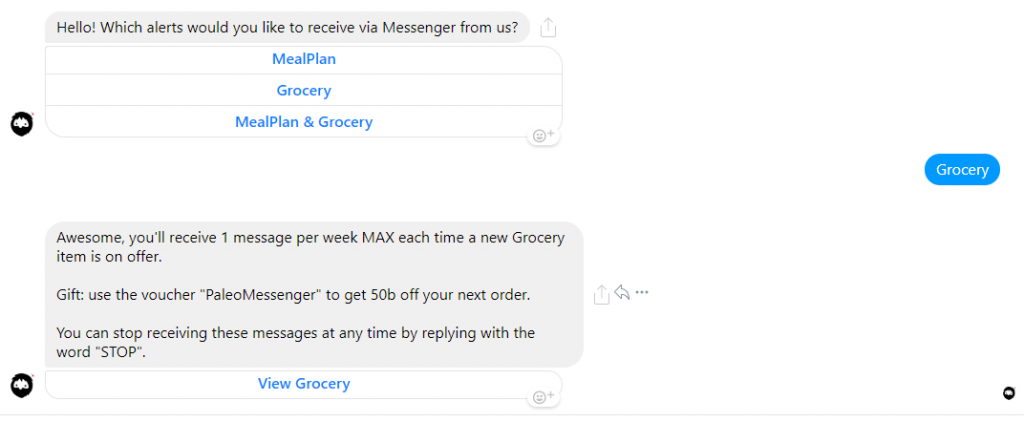
They promise customers a free gift if they sign up, which is a great idea. On the front-end they give away minimal value to the customer hoping on the back-end that this shopping bot will get them to order more frequently.
Related: learn 7 advanced strategies to drive more ecommerce sales.
If you have an active email list, you can create a Messenger shopping bot which acts as a secondary medium to get your newsletters out. The average email open rate may only be 23%, but Messenger bot open rates have been as high as 80+%:
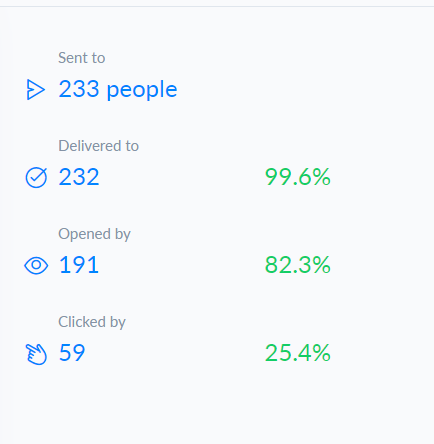
SnapTravel
SnapTravel is an online platform that helps users find the best hotel deals using a Facebook Messenger, SMS, or WhatsApp bot.
You provide SnapTravel with your city or hotel name and dates and then choose how you’d like to receive this information.
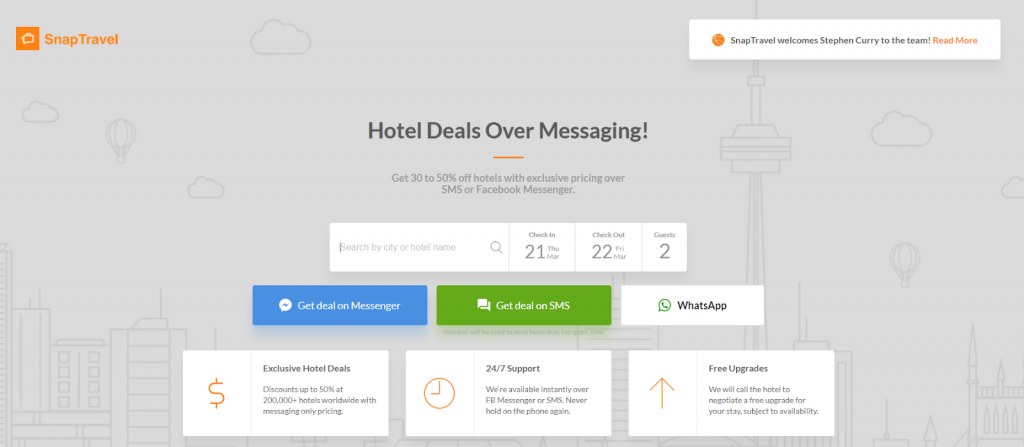
I chose Messenger as my option for getting deals and a second later SnapTravel messaged me with what they had found free on the dates selected, with a carousel selection of hotels. If I was not happy with the results, I could filter the results, start a new search, or talk with an agent.
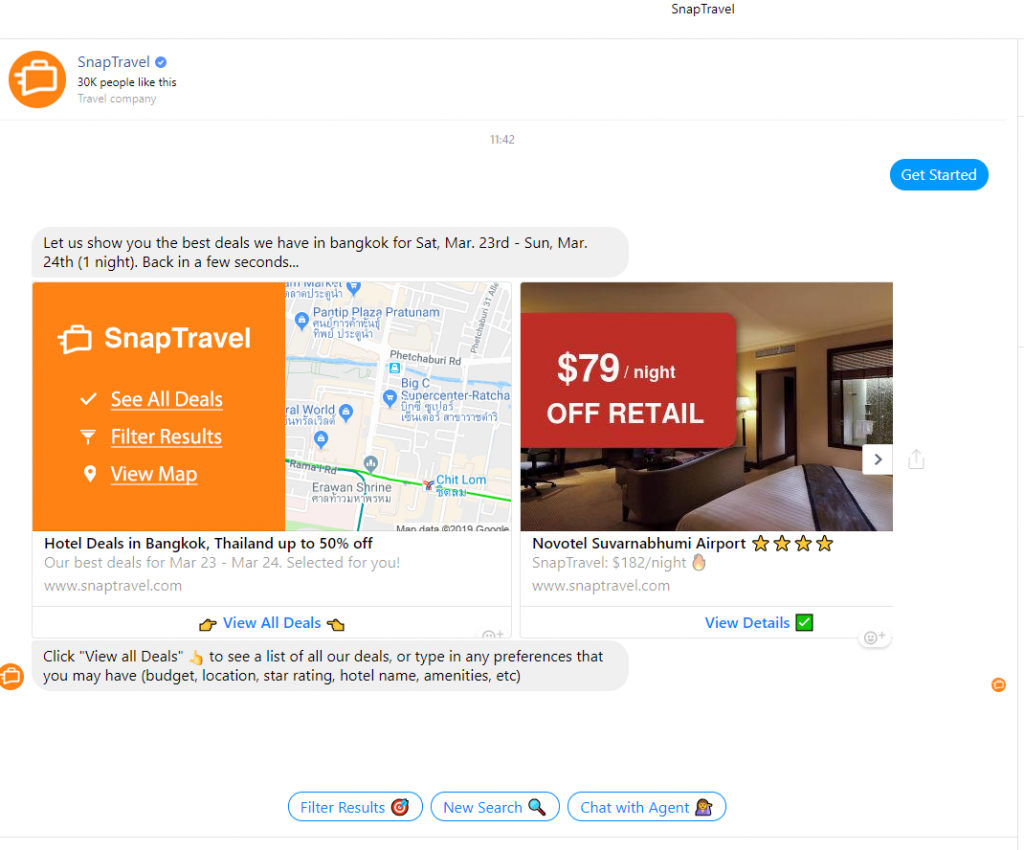
I chose to filter my results and so a pop-up was displayed where I could refine by hotel name or hotels near a location, or filter by deals, hotel star rating, budget range, currency, and amenities.
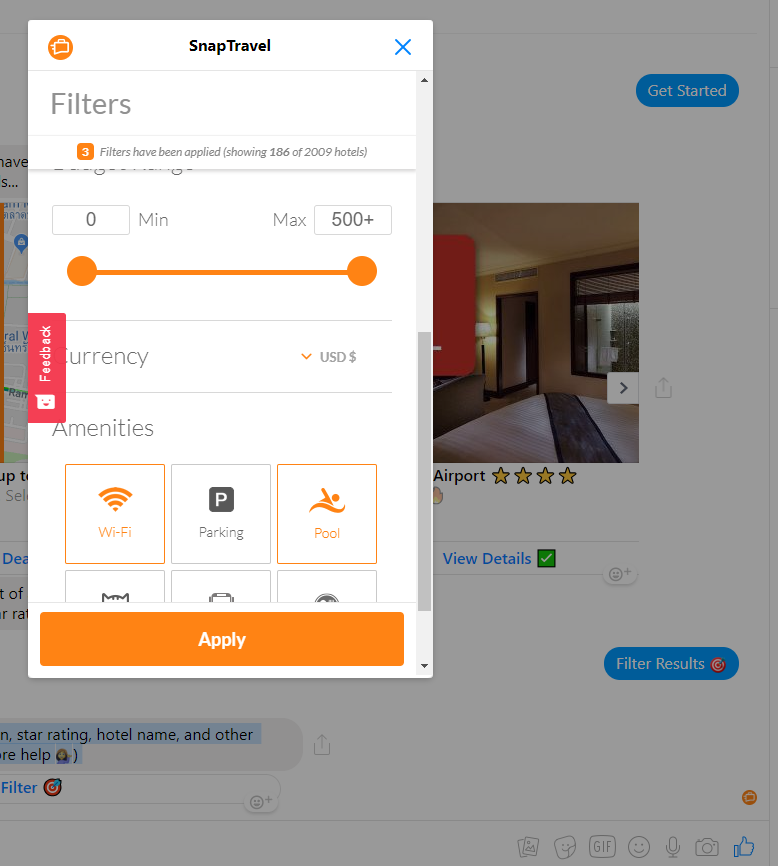
After I chose my filter options, I was then shown a range of hotels that I could book.
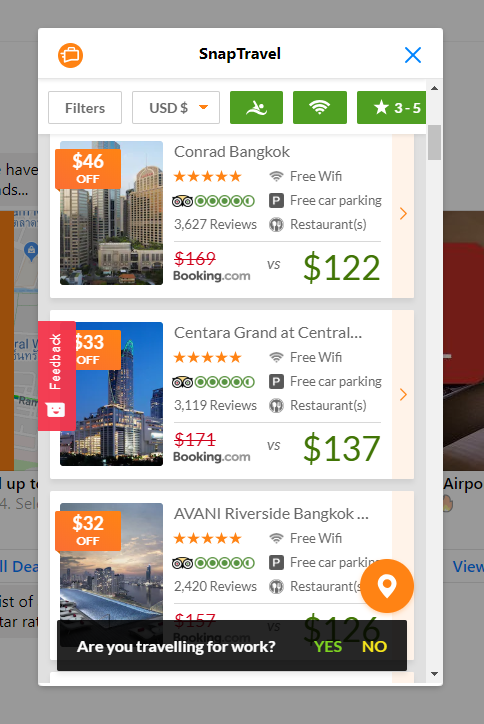
When booking a hotel there are a lot of variables to consider such as date, location, budget, room type, star rating, breakfast options, air conditioning, pool, check-in and check-out times, etc.
A Google Study found that 55% of travelers agree that they need to visit several travel resources before booking a hotel.
If you’re selling a product or service online where the consumer needs to research independently, or it requires them to make several choices to find the right product for them, then consider creating an AI filter-based shopping bot that helps consumers narrow down what they need.
You may have a filter feature on your site, but if users are on a mobile or your website layout isn’t the best, they may miss it altogether or find it too cumbersome to use.
eBay ShopBot
In 2016 eBay created ShopBot which they dubbed as a smart shopping assistant to help users find the products they need.
ShopBot was essentially a more advanced version of their internal search bar.
If you’ve ever used eBay before, the first thing most people do is type in what they want in the search bar.
eBay’s idea with ShopBot was to change the way users searched for products.
Unlike all the other examples above, ShopBot allowed users to enter plain-text responses for which it would read and relay the right items.
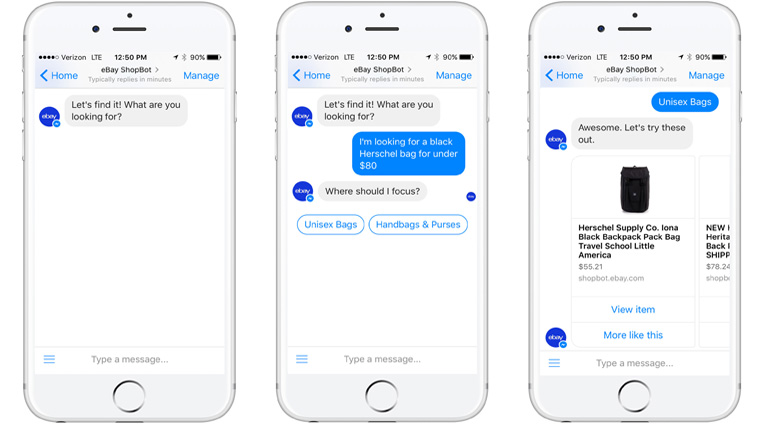
Not many people know this, but internal search features in ecommerce are a pretty big deal.
Studies show that consumers who use an on-site search are 216% more likely to convert, and revenue generated from site search is much higher than users who do not use search:
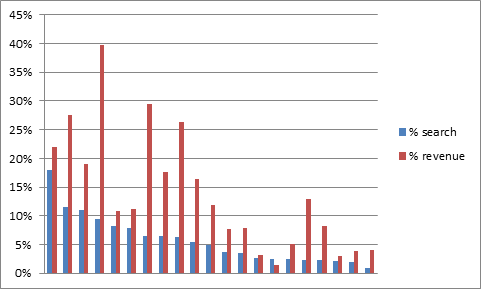
ShopBot was discontinued in 2017 by eBay, but they didn’t state why. My assumption is that it didn’t increase sales revenue over their regular search bar, but they gained a lot of meaningful insights to plan for the future.
eBay has one of the most advanced internal search bars in the world, and they certainly learned a lot from ShopBot about how to plan for consumer searches in the future.
If you have a large product line or your on-site search isn’t where it needs to be, consider having a searchable shopping bot.
Just because eBay failed with theirs doesn’t mean it’s not a suitable shopping bot for your business.
Bot are you going to do?
In each example above, shopping bots are used to push customers through various stages of the customer journey. They are not just about making sales.
Troubleshoot your sales funnel to see where your bottlenecks lie and whether a shopping bot will help remedy it.
Bots are going to play a huge role in ecommerce in the future. Outside of a general on-site bot assistant, businesses aren’t using them to their full potential.
If your competitors aren’t using bots, it will give you a unique USP and customer experience advantage and allow you to get the head start on using bots.
Companies our team has worked with:











